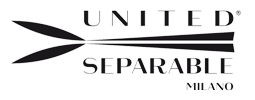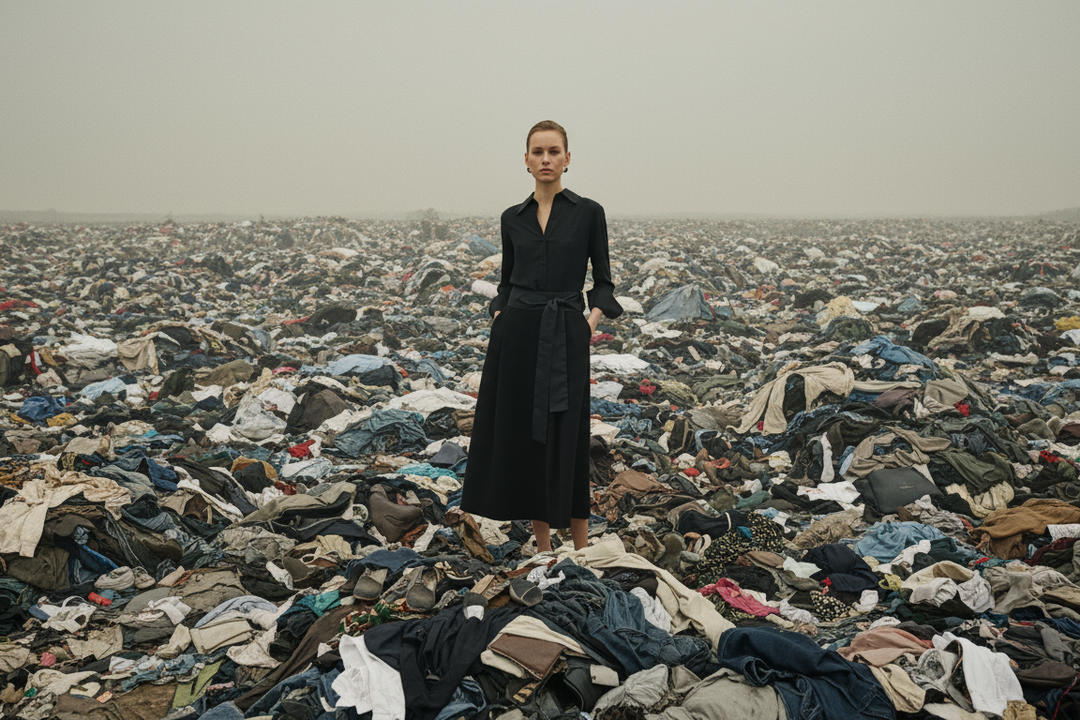At the Re-think Circular Economy Forum 2025, I shared the evolution of United Separable, a project that was not born from a stylistic inspiration but from the idea of applying systemic logics to the wardrobe.
My background comes from the world of network architectures and telecommunications, where complex systems are built using independent modules and standard interfaces that allow updates, replacements, and transformations without disrupting the entire system. With United Separable, we sought to translate this vision into the design of a clothing product, imagining a wardrobe designed to evolve over time, just like a network. It is not about proposing a new style, but about experimenting with a design model that integrates modularity, ecodesign, and circular thinking..
We chose to look at the wardrobe as a system. A complex system that today is often unbalanced: too many inputs — new purchases — and too few real outputs — garments actually worn. Most components remain unused, while the current model follows a linear
flow: store → wardrobe → waste.
In our approach, the wardrobe system becomes intentional: every component is designed to have a role, connected to the others, enabling more combinations with fewer resources. Garments are modular, interoperable, and capable of transforming over time — allowing the overall value of the system to grow while extending its lifecycle.
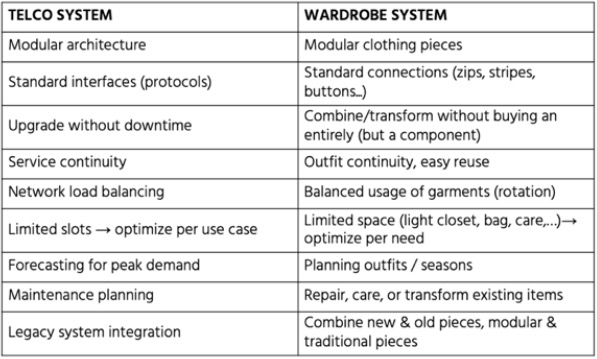
Our prototypes are created with a “standard interface”: zips, buttons, and connections that allow tops, skirts, and divisible dresses to be joined, separated, and recombined. Each garment becomes a flexible component, integrating seamlessly with others, just like in the technological systems that inspired the project.
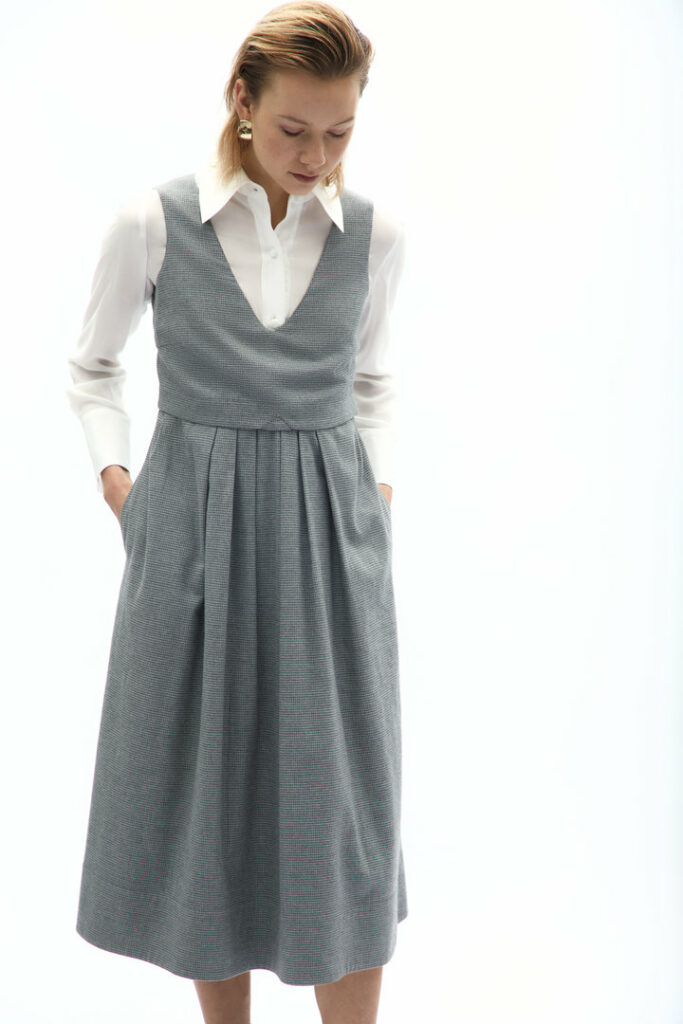
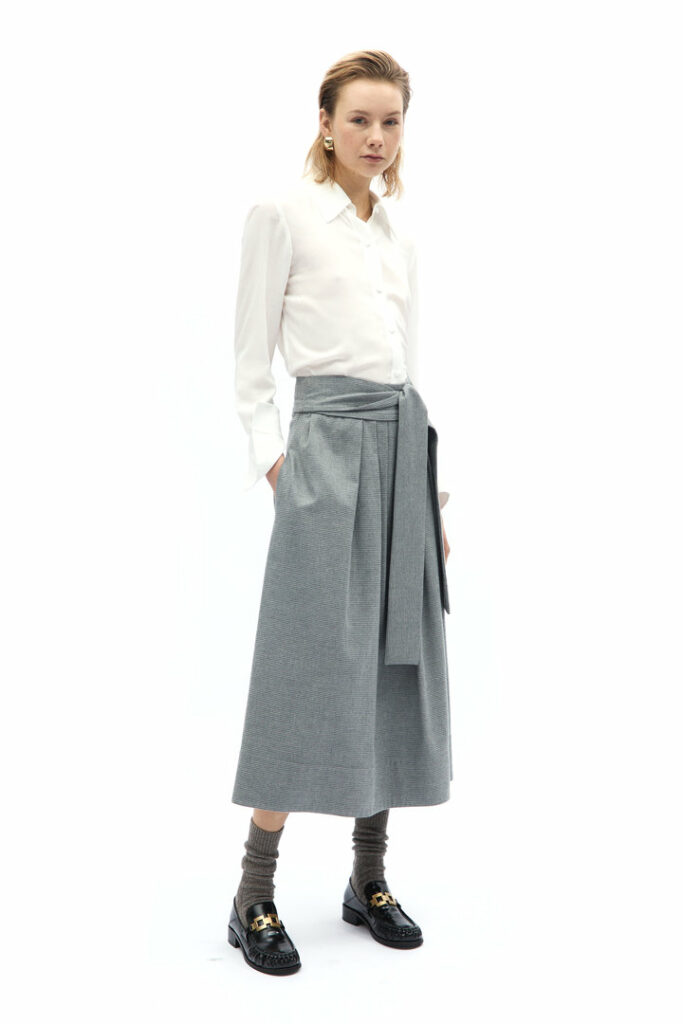
The choice of materials is an integral part of the model: we use natural and recycled fabrics, sourced from a local and transparent supply chain. In this context, modularity is not an aesthetic choice but a design tool that enables us to rethink the relationship between design, materials, supply chain, and time. This is not just about making “greener” products: the goal is to rebalance the wardrobe system, creating a model where value and use move together in a more conscious and circular cycle.
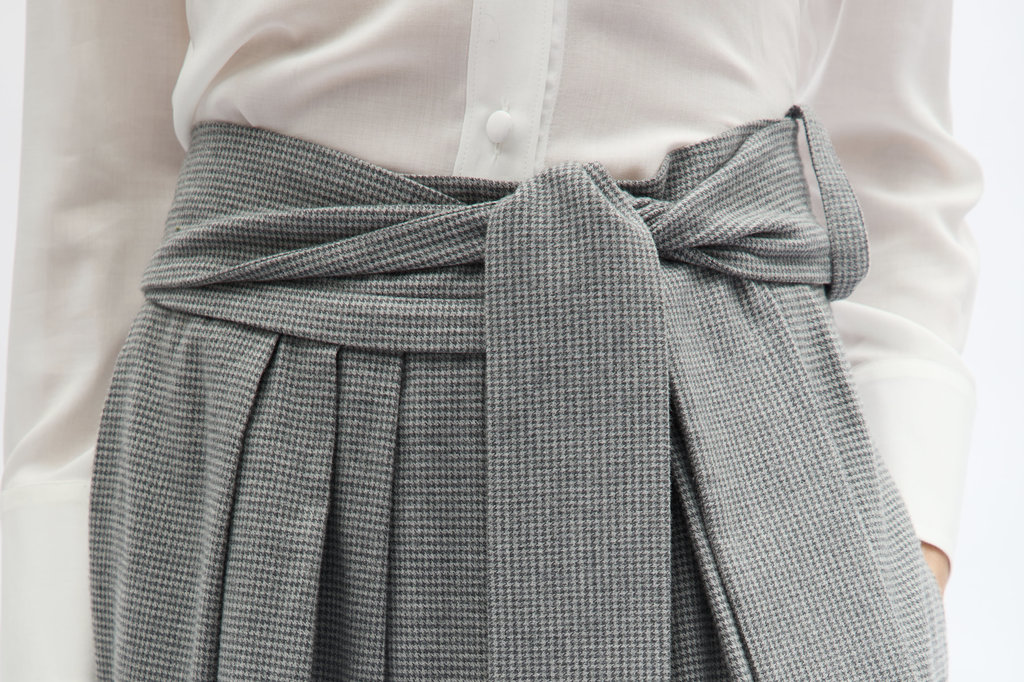
To give structure to this approach, we developed internal tools that allow us to measure, evaluate, and guide our design decisions:
Ecodesign Index → evaluates material quality, product durability, environmental impacts, and design choices.
Supplier Transparency Score (STS) → measures the level of openness, traceability, and responsibility within the supply chain.
These tools are not official standards, but operational frameworks: simple, flexible, and. designed to be applicable even to small enterprises. They are not meant to produce “perfect” results but to provide a practical data foundation for progressive improvement.
For example, by applying the Supplier Transparency Score to the suppliers involved in our early prototypes — covering the entire supply chain, from upstream to core and downstream — we found that only 18% achieved the highest level of transparency, while roughly two-thirds provided partial, incomplete, or no data.
United Separable is not a collection but an open laboratory: a design experiment that unites creativity, analysis, and responsibility. Our work draws inspiration from the logic of connected systems: as in network architectures, each component has a role but is designed to interact with the others. In this sense, the wardrobe becomes a governed system, where every design decision contributes to a broader vision.
For us, circularity means reconnecting: intention and use, design and behaviour, durability and value. It means creating products that can be repaired, transformed, and reused, but also developing analytical tools to understand and manage the consequences of our choices.
This talk was presented on 22 May 2025 at the Re-think Circular Economy Forum, organised by Tondo in Milan, as part of an international dialogue dedicated to new ideas and practices for sustainable innovation.
